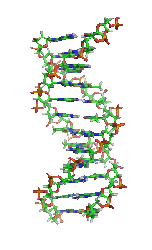Newswise May 17, 2012 - Oakland, Calif. Scientists at Childrens Hospital Oakland Research Institute (CHORI) led by Vladimir Serikov, MD, PhD, and Frans Kuypers, PhD, report in the current Epub issue of Stem Cells Translational Medicine (1) that placental stem cells with important therapeutic properties can be harvested in large quantities from the fetal side of human term placentas (called the chorion). The chorion is a part of the afterbirth and is normally discarded after delivery, but it contains stem cells of fetal origin that appear to be pluripotent -- i.e., they can differentiate into different types of human cells, such as lung, liver, or brain cells. Since these functional placental stem cells can be isolated from either fresh or frozen term human placentas, this implies that if each individuals placenta is stored at birth instead of thrown away, these cells can be harvested in the future if therapeutic need arises. This potential represents a major breakthrough in the stem cell field.
In previous work, Drs. Serikov and Kuypers reported a novel technology to harvest blood-forming stem cells from the placenta to augment cord blood cells (2). These cells are siblings of the cord blood derived stem cells. Cord blood stem cells, unlike embryonic stem cells, have been used for many hundreds of successful bone marrow transplants. These transplants are mainly performed in children, as the amount of cells that can be harvested from cord blood is usually not sufficient for a successful transplant in adults. Adding placental-derived stem cells to the cord blood stem cells could make successful adult bone marrow transplants routinely possible.
The current report (1) demonstrates that placental stem cells have much broader therapeutic potential than bone-marrow transplants, because they are pluripotent i.e. able to differentiate into many different cell types -- and they also generate growth factors that help in tissue repair. These cells are shown to integrate into different tissues when transplanted into mice, but like cord blood stem cells, and in contrast to embryonic pluripotent stem cells, they do not form tumor-like structures in mice.
Placental-derived stem cells are often viewed as adult stem cells in contrast to embryonic stem cells, which are the dominant focus in the stem cell research field. However, this report shows that these fetal stem cells can be harvested in large numbers, and without the ethical concerns attached to the use of embryonic stem cells. These stem cells may thus be a more practical source for regenerative medicine, particularly since, if placentas are routinely saved instead of thrown away, each individual will be able to draw on their own fetal stem cells if future therapeutic needs arise.
Placental stem cells are only 9 months old, and in contrast to adult stem cells, do not need to be reprogrammed to become pluripotent. Placental-derived stem cells have characteristics of young and vigorous cells, including young mitochondria. Future research will be aimed to bring this to the clinic and to test their efficacy in translational therapeutic applications.
Childrens Hospital Oakland Research Institute (CHORI), is known internationally for state-of-the-art basic and clinical research and translating it into interventions for treating and preventing human diseases. CHORI has 300 members of its investigative staff, a budget of about $50 million, and is ranked among the nations top 10 research centers in National Institutes of Health funding to childrens hospitals. For more information, go to http://www.childrenshospitaloakland.org and http://www.chori.org.
References 1. Nazarov I, Lee J, Soupene E, Etemad S, Knapik D, Green W, Bashkirova E, Fang X, Matthay MA, Kuypers FA, Serikov VB. Multipotent Stromal Stem Cells from Human Placenta Demonstrate High Therapeutic Potential. Stem Cells Translational Medicine :2012;2011:2000 2000 http://www.StemCellsTM.com : Link to Abstract: http://stemcellstm.alphamedpress.org/content/early/2012/05/08/sctm.2011-0021.abstract, 2012. To appear in the June 2012 print issue. 2. Serikov V, Hounshell C, Larkin S, Green W, Ikeda H, Walters MC, Kuypers FA. Human Term Placenta as a Source of Hematopoietic Cells. Exp Biol Med (Maywood) 234:813-823, 2009.
Continue reading here:
Multipotent Stromal Stem Cells from Normally Discarded Human Placental Tissue Demonstrate High Therapeutic Potential
